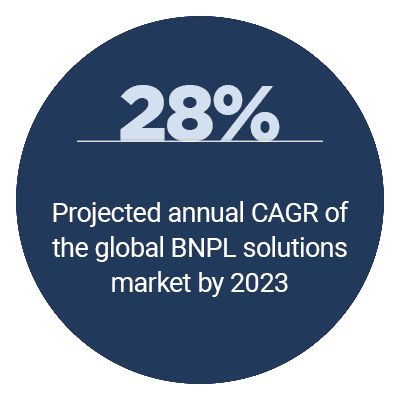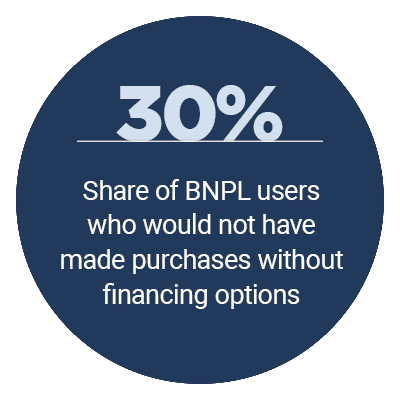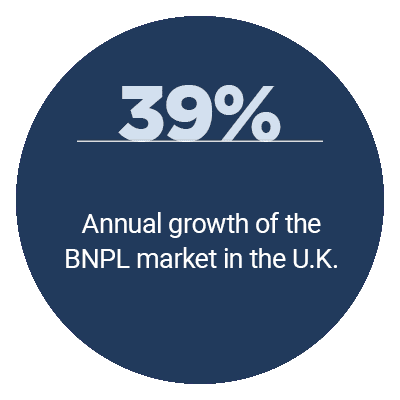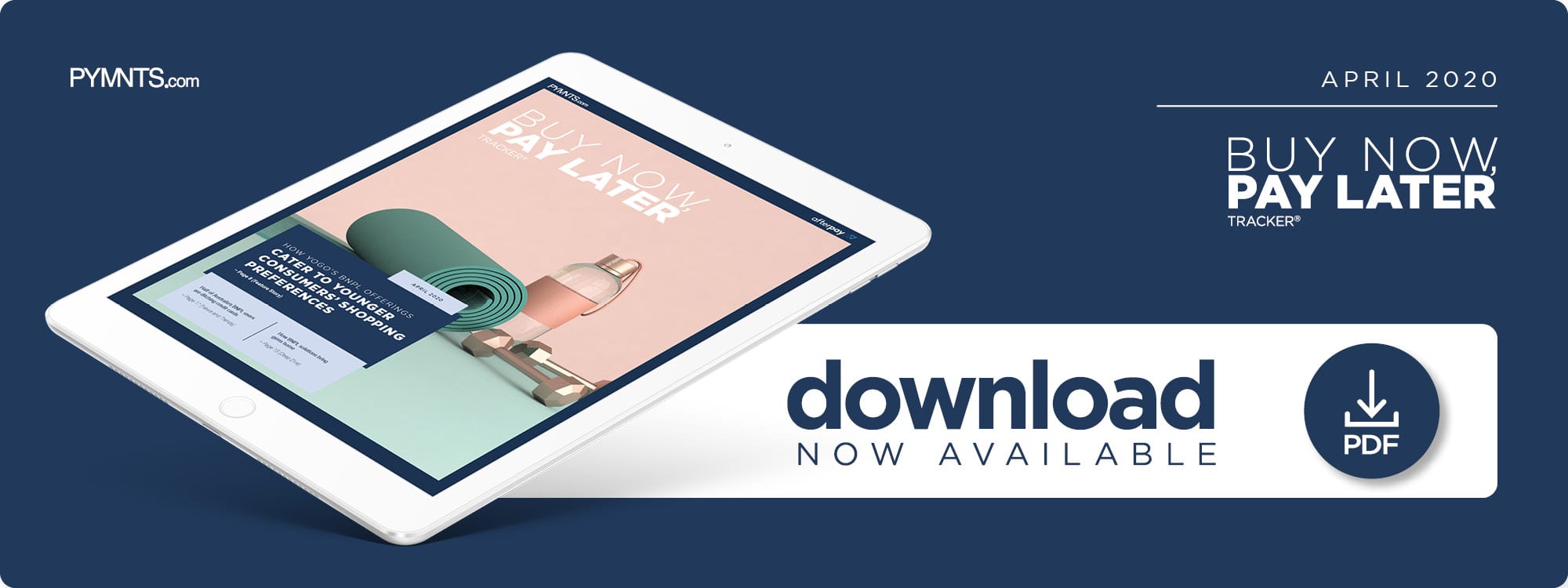Installment Payments Push Sports-Equipment Sales Over The Finish Line

Buy now, pay later (BNPL) solutions are more popular than ever, allowing consumers to avoid paying at the point of purchase and instead doing so in increments over several weeks.
BNPL solutions are the fastest-growing online payment methods in the United States as well as Australia, Brazil, the United Kingdom and more, and their market share is projected to grow at a compound annual growth rate of 28% over the next five years.
BNPL solutions are even beginning to replace traditional credit among younger consumers. Just 33% of millennials carry credit cards, for example, but this demographic and Generation Z combine to make up the largest BNPL market user base. These services are beneficial to businesses as well, with payment solutions provider PayPal finding that average receipt sizes rose 15% for the retailers that offered them.
In the April “Buy Now Pay, Later Tracker®,” PYMNTS explores the latest in the world  of BNPL, including its exploding popularity in Australia, its effects on the at-home fitness industry, and how the introduction of these services reflects larger purchasing trends among younger consumers.
of BNPL, including its exploding popularity in Australia, its effects on the at-home fitness industry, and how the introduction of these services reflects larger purchasing trends among younger consumers.
Developments From Around the World of Buy Now Pay Later
BNPL solutions have especially caught on in Australia, where 5.8 million consumers use these payment products on a regular basis to make purchases. These services are a relatively recent addition to the Australian spending economy, with nearly two-thirds of these users having only started BNPL accounts in the past two years. It is well on its way to replacing credit cards, however, with approximately half of the country’s BNPL users reporting they have already stopped using their cards.
Many of these regular purchases made with BNPL services are for beauty products, with a host of cosmetics companies partnering with BNPL providers to increase their market footprint. Fenty, Haus Laboratories and Jeffree Star Cosmetics have partnered with Afterpay in order make the most of millennials’ and Gen Z consumers’ increasing preference for BNPL products over traditional credit cards. It seems that so far, these partnerships and implementations have paid dividends, with natural cosmetics company Beauty Kitchen’s sales increasing by 10% since its introduction of BNPL services, for example.
The BNPL market is facing regulatory pressure, howev er, with the Australian government recently launching an inquiry into implementing similar restrictions on BNPL providers as those already in place for credit card companies. BNPL companies are resisting this proposed change, however, instead urging the government to base any new regulations on a voluntary code of conduct the providers have already developed. They argue that their businesses’ unique nature means credit card regulations may be ill-suited for their industry.
er, with the Australian government recently launching an inquiry into implementing similar restrictions on BNPL providers as those already in place for credit card companies. BNPL companies are resisting this proposed change, however, instead urging the government to base any new regulations on a voluntary code of conduct the providers have already developed. They argue that their businesses’ unique nature means credit card regulations may be ill-suited for their industry.
For more on these and other BNPL news items, download this month’s Tracker.
How Yogo’s BNPL Integration Lowers the Cost of At-Home Fitness
The spread of the coronavirus and resulting social distancing mandates are driving more U.S. consumers to take their exercise routines indoors. But with unemployment skyrocketing, financing options can go a long way in reducing the burden of expensive workout equipment on consumers’ wallets. In this month’s Feature Story, PYMNTS spoke with Jessica Thompson, founder and CEO of travel yoga mat producer Yogo, about how the company teamed up with BNPL solutions provider Afterpay to make yoga equipment more  accessible, especially to younger generations of shoppers who are already avid users of BNPL solutions.
accessible, especially to younger generations of shoppers who are already avid users of BNPL solutions.
Deep Dive: BNPL Brings the Gym to Consumers’ Homes
Approximately 51.6% of Americans exercise for 30 minutes at least three days per week, but between gym memberships and fitness classes, the costs of this hobby can begin to add up. Many consumers are turning to home gym equipment to keep expenses down, but the upfront costs of these investments is giving many fitness buffs sticker shock. This month’s Deep Dive explores how BNPL solutions from Bowflex, Peloton and third-party providers like Afterpay are making home gyms more affordable, especially as the COVID-19 outbreak is keeping many individuals from leaving the house.
About the Tracker
The “Buy Now Pay, Later Tracker®,” done in collaboration with Afterpay, is your go-to monthly resource for updates on trends and changes in BNPL services.

